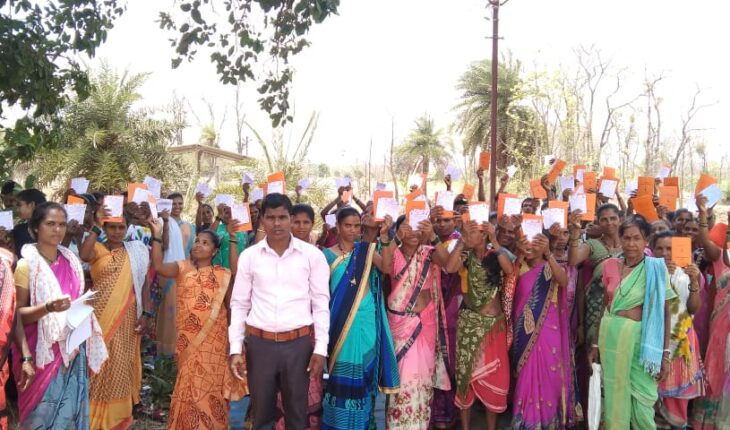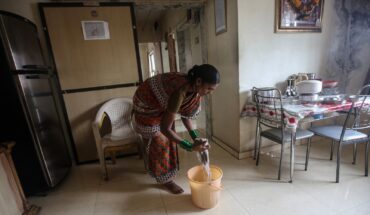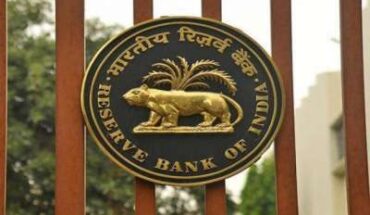By Adv. Sneha Dube Pandit
In one of the historic judgements of the Supreme court, The Supreme court directed that by July 31, 2021, all States and Union Territories must implement the “One Nation One Ration Card” (ONORC) scheme that allows migrant labourers to get ration benefits from any part of the country, irrespective of the place where their ration card is registered.We welcomed this decision, but what about thousands of people who do not possess any Ration cards even after 75 years of Independence? Talasari is the Tribal Block (Taluka) of Maharashtra that connects the two largest Progressive states of India, Maharashtra and Gujarat. But thousands of tribals of Talasari are deprived of Ration cards and therefore they are deprived of their fundamental right to live with dignity.A 67-year-old woman, Mangal Barsa Kakad, from a tribal hamlet, Anvir-Thakar Pada in Talasari gets her family ration card on 19 November 2019 for the first time after years 72 years of independence. When she holds the ration card in shaking, wrinkled hands, looking at the ration card with teary eyes, she sees a Ray of Freedom for the first time in her whole life. The story of the poor tribals of Surgana Taluka in Nashik District is no different. When our whole country, government, the upper and middle classes of the country were celebratingthe 75th anniversary of independence, while on the other hand, 1400 tribals of Kathi padaGadbari, Borpada, Hanumant Pada, Udyamala, Karanjul of Surguna Taluka in Nashik Districtwere celebrating the joy of getting ration cards for the first time after 75 years of independence. For them Ration card is freedom, a ration card is their identity as an Indian citizen, and a ration card is a means of their economic upliftment. Whether it was a 67-year-old lady of Talasari or the tribals of Surgana, the ration card has an intrinsic value in their lives. Their economy depends upon ration cards, unlike the middle and upper classes in the country. 27% of the total population lives below the poverty line, which is approx. 38.0052 crores among the 140.7 crores of the total population. For most people in our country, a ration card is just a residential proof or identity proof required for other important documents, such as a passport, PAN card, Aadhar card, or voting card. But for 27% of the population, i.e., 38.0025 crore, ration card is a lifeline; it is a proof of their existence. The ration card enables eligible households to buy food grains at subsidized rates under the National Food Security Act (NFSA). “The right to life, as guaranteed by Article 21 of the Indian Constitution, gives the right to every human being to live a life of dignity with access to at least bare necessities of life to provide food security to impoverised persons in the boundenduty of all states and government. The parliament, with object to provide food and nutritional security in human life cycle had enacted the national food security act 2013.”.There are four types of ration cards: -• APL: Above the Poverty line • BPL: Below the Poverty line • PHH: Priority Household • AAY: Antyodaya Anna Yojana PHH and AAY ration cards are important for the upliftment of poor families.
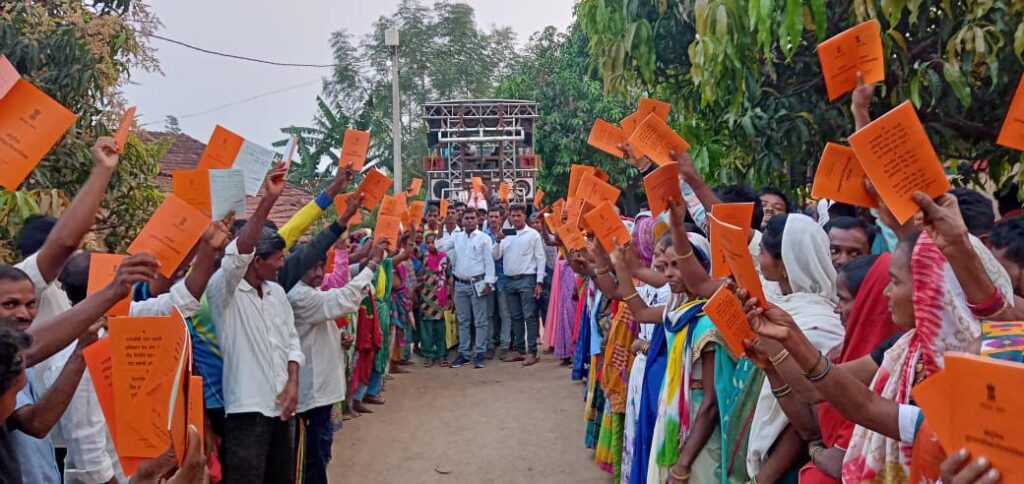
PHH: – Any household that owns a priority household ration card will receive 5 kg of food grains per person in a family, every month at subsidized prices. AAY:- AAY is issued to the poorest of poor households. These Ration Card holders are entitled to 35 kg of grains per card. Antyoday Yojana was launched first in December 2000, covering 1 crore poorest of poor families. The first expansion of the scheme took place in 2003–04, covering 1.5 crore poor families (i.e.: – 23% of BPL). The second expansion took place in 2004–05, covering 2 crores families, and the third expansion took place in 2005–06, covering 2.5 croresfamilies(i.e.: – 38 of BPL). Even after this, 62% of BPL families are still awaiting inclusion in the AAY scheme. The real difficulty arises with people who do not possess any cards issued under the NFSA or even by respective states, as mentioned earlier. There is a large no. of such people who donot possess any card. Their above disability is due to their poverty and lack of education, but the state cannot abdicate its duty towards such persons, especially in the wake of the celebration of the 75th Anniversary of Independence.Poor people who did not possess any ration cards faced many difficulties during the COVIDpandemic when the entire country went into lockdown. The Central gov. provided free rations to the cardholders of the BPL, PHH, and AAY for more than a year. But those who did not possess any card suffered a lot. Shramajivi Sanghatna, who has been working for tribals, unorganized labourers and underprivileged people for more than 40 years in Thane, Palghar and Nashik districts, decided to fight against this injustice. When a majority of people in India were seated behind doors, thousands of volunteers of Shramajivi Sanghatna did agitations following social distancing on the streets and in the Tehsil offices demanding new ration cards for the right tolive with dignity for the poorest of the poor. More than 21,000 families got new ration cards because of the aggressive demands and efforts of Shramajivi Sanghatna.
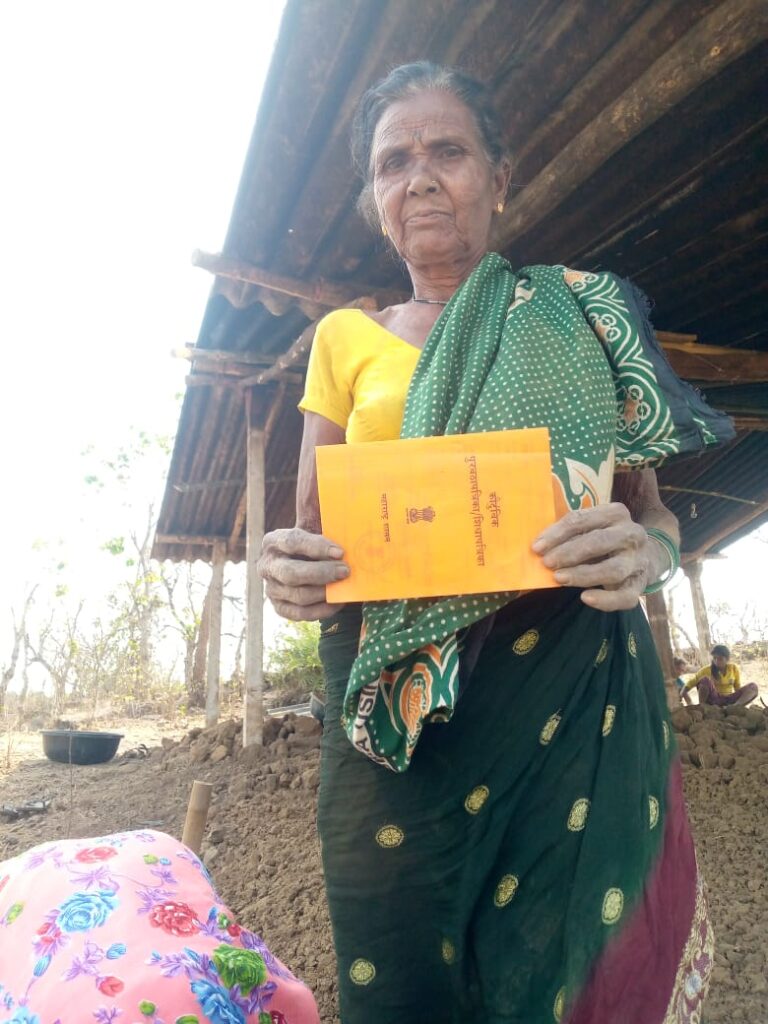
This was not a small victory. There were sacrifices of the health of thousands of volunteers who never thought or give priority to their self-health or their family’s health. The economy of tribals and people living below the poverty line is very much dependent upon ration cards. The majority of these are daily wage workers, landless farmers, company workers, workers who worked under employment guarantee schemes, construction workers, domestic workers, etc. If a majority of their income was spent on ration then what will remain for their other expenses? Their day-to-day life will become miserable without a ration card.Hunger is a natural feeling of every living being and food is the main means of satisfying hunger. Thousands of freedom fighters sacrificed their lives in the freedom struggle so that no one could starve without food in independent India. But on the contrary, even after so many years of independence, Laxmi Wagh (36yrs) who resided in Kalyan, Maharashtra, committed suicide with her three children in 2016 as there was not a single grain left in her house to feed her children nor herself. Santoshi, the 11-year-old daughter of Kohli Devi in Jharkhand lost her life due to starvation in 2017. These are just two examples, there are many Santoshi and Lakshmi’s in India who starve daily, who struggles daily for just one meal. This is not the situation only in Maharashtra nor in Jharkhand, but in the whole country, in the majority of villages and hamlets. Most of the people do not have ration cards and those who have it, are not connected with Aadhar cards. So they are deprived of all the facilities which they can get from ration cards. The people we are talking about in this article are the workforce behind the economic development of India, so 73% of Indians should realize the importance of this 27% of people who live below the poverty line. These people are not dependent, but they need support to empower themselves, economically and socially, and we should recognize the ration card as the main means of their economic upliftment. In one of the famous judgements of the Supreme court, Justice Bhagwati mentioned the importance of workers, “…. The workers therefore have a social place in a socialist pattern of society. They are no more vendors of toil, they are not a marketable commodity to be purchased by the owners of capital. They are producers of wealth as much as capital. They supply labour without which capital would be impotent and they are, at the least, equal partners with capital in the enterprise…….”Therefore, as said by justice Bhagwati underprivileged people of this country who also have a contribution to the economic development of this country should get the right to live with dignity, and for that, each of them should get a ration card. It is the foremost responsibility of the state and the central government to provide ration cards to each and every citizen and increase the AAY quota of ration cards. “The GDP growth rate for India is the highest among all the economies; the Indian economy is on the right track.” as the finance minister recently quoted in the budget session. The GDP growth is not just enough; the government should see the roots of India; these unprivileged people are roots, and if they want to strengthen the roots, the government should provide all necessary means for their development, so no one sleeps hungry in this Independent India.
Adv. Sneha Dube Pandit, Working President of Shramajivi Sanghatna (Karyadhyaksha) Maharashtra.


